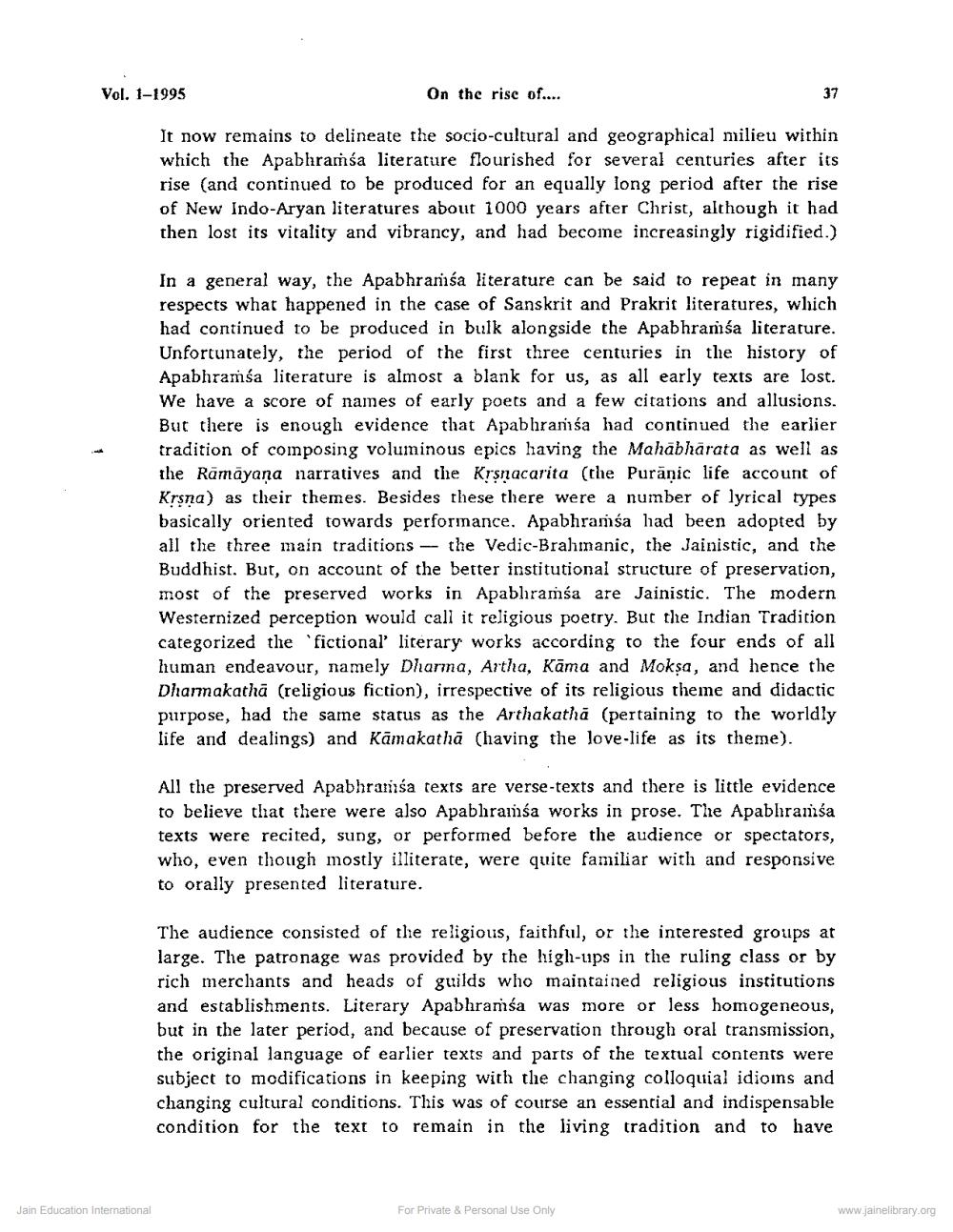________________
Vol. 1-1995
On the rise of....
It now remains to delineate the socio-cultural and geographical milieu within which the Apabhramsa literature flourished for several centuries after its rise (and continued to be produced for an equally long period after the rise of New Indo-Aryan literatures about 1000 years after Christ, although it had then lost its vitality and vibrancy, and had become increasingly rigidified.)
Jain Education International
37
In a general way, the Apabhramśa literature can be said to repeat in many respects what happened in the case of Sanskrit and Prakrit literatures, which had continued to be produced in bulk alongside the Apabhramsa literature. Unfortunately, the period of the first three centuries in the history of Apabhramśa literature is almost a blank for us, as all early texts are lost. We have a score of names of early poets and a few citations and allusions. But there is enough evidence that Apabhramsa had continued the earlier tradition of composing voluminous epics having the Mahabharata as well as the Rāmāyaṇa narratives and the Kṛṣṇacarita (the Puranic life account of Kṛṣṇa) as their themes. Besides these there were a number of lyrical types basically oriented towards performance. Apabhramsa had been adopted by all the three main traditions - the Vedic-Brahmanic, the Jainistic, and the Buddhist. But, on account of the better institutional structure of preservation, most of the preserved works in Apabhiramsa are Jainistic. The modern Westernized perception would call it religious poetry. But the Indian Tradition categorized the 'fictional literary works according to the four ends of all human endeavour, namely Dharma, Artha, Kama and Mokşa, and hence the Dharmakatha (religious fiction), irrespective of its religious theme and didactic purpose, had the same status as the Arthakatha (pertaining to the worldly life and dealings) and Kamakatha (having the love-life as its theme).
All the preserved Apabhramsa texts are verse-texts and there is little evidence to believe that there were also Apabhramsa works in prose. The Apabhiramsa texts were recited, sung, or performed before the audience or spectators, who, even though mostly illiterate, were quite familiar with and responsive to orally presented literature.
The audience consisted of the religious, faithful, or the interested groups at large. The patronage was provided by the high-ups in the ruling class or by rich merchants and heads of guilds who maintained religious institutions and establishments. Literary Apabhramsa was more or less homogeneous, but in the later period, and because of preservation through oral transmission, the original language of earlier texts and parts of the textual contents were subject to modifications in keeping with the changing colloquial idioms and changing cultural conditions. This was of course an essential and indispensable condition for the text to remain in the living tradition and to have
For Private & Personal Use Only
www.jainelibrary.org




